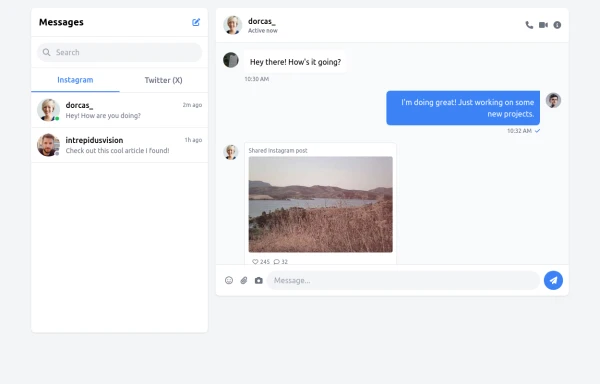- Home
-
Working tabs switch
Working tabs switch
This tailwind example is contributed by Fagundo67, on 27-Feb-2023. Component is made with Tailwind CSS v3. It is responsive.
Author Fagundo67
Related Examples
-
3 years ago16.9k
-
Tab Switch
tab-switching example with tailwind and vanilla JS
2 years ago7.7k -
2 years ago17.3k
-
2 years ago13.1k
-
2 years ago15.8k
-
2 years ago9.8k
-
Tab Menu
Tab menu
1 year ago6.1k -
Rwanda-Canada Transport Services | Safe & Reliable Shipping
Attractive color scheme inspired by Rwanda's landscapes
3 months ago217 -
cards
cards with background animation
2 years ago11.1k -
Adminpanel
Three tabs, switch between each other, change color when clicked. Tables with filter, search, with a drop-down form to fill.
7 months ago1.3k -
chat bar
live chat
4 months ago592 -
cards
cards with background animation
1 year ago2.7k
Explore components by Tags
Didn't find component you were looking for?
Search from 2400+ components











